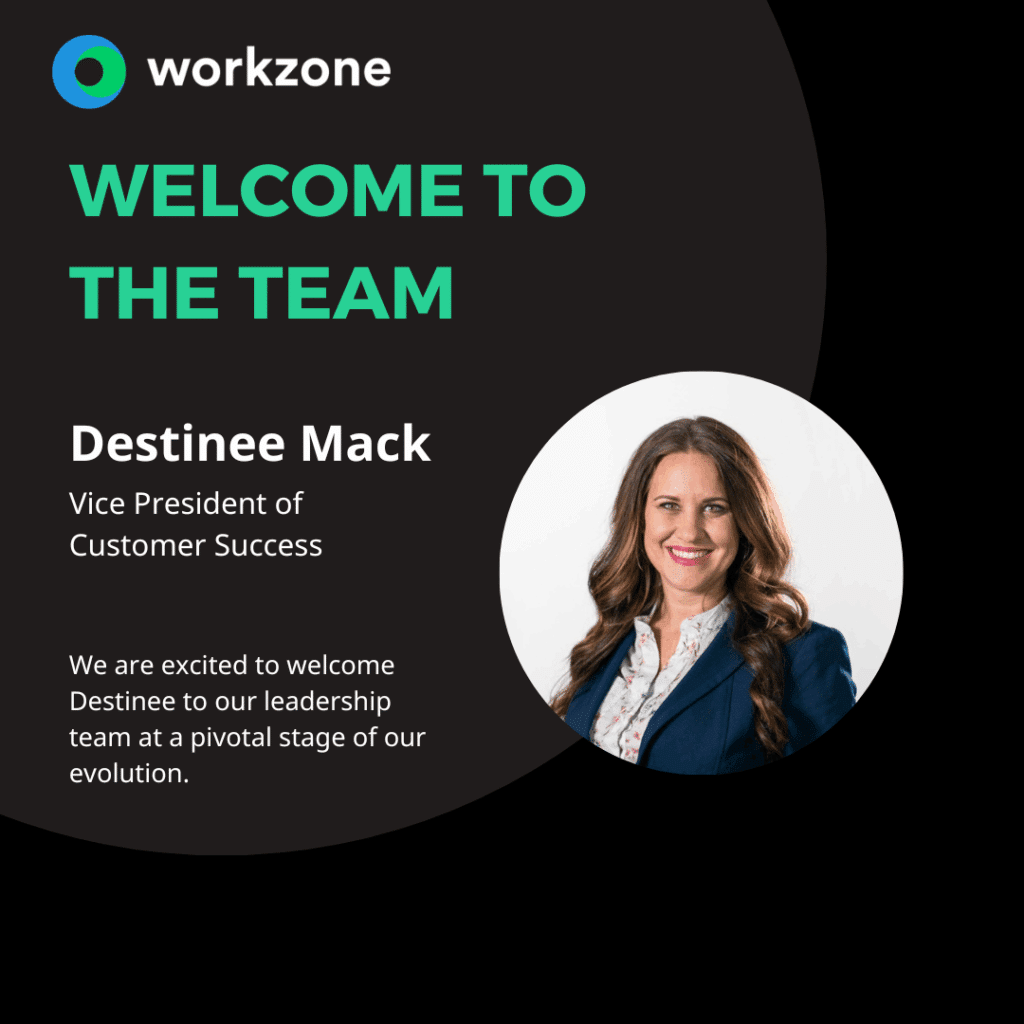Getting Personal to Achieve Project Management Success

How personal are we talking here?
We’re talking about being consultative and helpful and getting to root needs and pains, not getting into your grooming habits…unless you really want to!
We are unique here at Workzone. We offer a ton of support – much more than others in the project management space – so we’ve come to really understand and decipher needs and pains our customers face.
As teams implement Workzone, they are partnered with one of our Success Managers to facilitate the roll out of these new tools. No matter how easy to use these tools may be, deploying any new software poses challenges.
What is the first step to address a team’s challenges in on-boarding or general adoption?
The first step we take to overcome initial adoption challenges is to do some fact finding.
We listen and ask a lot of questions to discover:
- What specific challenges do you face? (ie What is it that creates the friction and stops projects in their tracks?)
- What are the leadership’s goals?
- How do you see your team evolving over the next year and few years?
Every day, I find myself talking to team leaders and project managers who are embarking on a journey to: “streamline their workflow”, “get more done”, or “give more visibility to their team”.
To bring better focus to the conversation about their success, I ask them for a more personal description.
If you ask someone “What’s the biggest challenge your team faces with their current projects?” You might get surface-level answers like “We struggle to meet deadlines.” or “We make too many mistakes in our work.”
So, I’ll ask about how those issues manifest for the team members and the team leader?
Let’s walk through a few examples of common scenarios.
Example 1: Deciphering Loaded Words
When talking with the Traffic Coordinator for a University marketing department, we discovered that:
“I want to give better visibility to our leadership”
really meant:
“I’d really like to spend more time guiding my designers and approving their work, but our director pops into my office every couple of hours asking tons of questions about the status of all of our jobs. So I end up recapping her instead of helping move the jobs along.”
The word “visibility” is a loaded one we hear all the time. It is used to illustrate many different pains but in this instance it is used to convey the need for status updates so she isn’t interrupted all the time. We discussed how she can send reports or others can pull up reports, or get important notifications on status changes.
Knowing the true motivation makes it much easier for that Traffic Coordinator to keep her team on task. Giving quick, at-a-glance status reports to their director means the team experiences fewer interruptions. The traffic coordinator is able to be more present for her designers, things are going smoother with the work, and the team feels more connected.
Example #2: Where’d you go?
Not too long ago, I helped a Project Manager regroup with their team after they’d fallen out of the habit of updating their tasks and projects. In a team who’s workload had grown 30% or more each year, they struggled to show their leadership the value in more staffing. Without accurate records of how the team’s time was spent, there wasn’t much ammo going into the staffing discussions.
When describing why they’d gotten away from keeping track of their tasks in Workzone, the explanation I heard was:
“We’ve been so busy trying to keep our heads above water that we haven’t made time for updating our tasks.”
This is one of those explanations that needed some digging.
I asked what would really be needed to get them back to tracking tasks and we ended up chatting about his need for additional personnel. This led to discussing how to log projected man-hours and capture actual time spent on projects. From that conversation, we saw a nearly immediate rebound in their use of our system.
The data they uncovered in Workzone made the headcount conversation easy!
If I left the conversation alone I’m sure they would have stopped using Workzone, and might still be feeling the stress of tackling that workload with their previous headcount. Thankfully, we were able to talk through the roadblock and find a solution quickly.
Example 3: Out of the Inbox
For the Director of Communications at major hospital system, it was easy to identify what would motivate her to keep their team collaborating through Workzone.
When I asked for a description of the one thing that she’d like to change most about the way her team’s work habits impact her, I barely got to finish my sentence before she exclaimed:
“I have over 2400 unread emails in my inbox, and I just want to finish reading messages in time to watch The Daily Show each night!”
This example is much easier to diagnose!
Workzone was designed to be that place to communicate about documents and projects in one central location. After a really great training call, we eliminated a lot of clutter from her inbox. She no longer has dozens of redundant emails from different team members.
So, chances are, she’s catching up on more of her shows.
Wrapping Up
Every one of us can benefit, personally, when our teams become more successful. Whether success means feeling good at bonus-time, or simply being home early enough to enjoy dinner with your family, it’s important to keep that personal connection in mind.
When you find a way to make your team’s goals personal, it’s easy to conquer the small challenges that might, otherwise, stand in your way. So, whenever you’re trying to motivate yourself or anyone else; keep the questions personal.
Workzone’s goal is to help make you successful. Understanding your needs is just one of the ways. Book a meeting today and we’ll see how much more productive Workzone can help your team be.
Last updated on June 3, 2025




